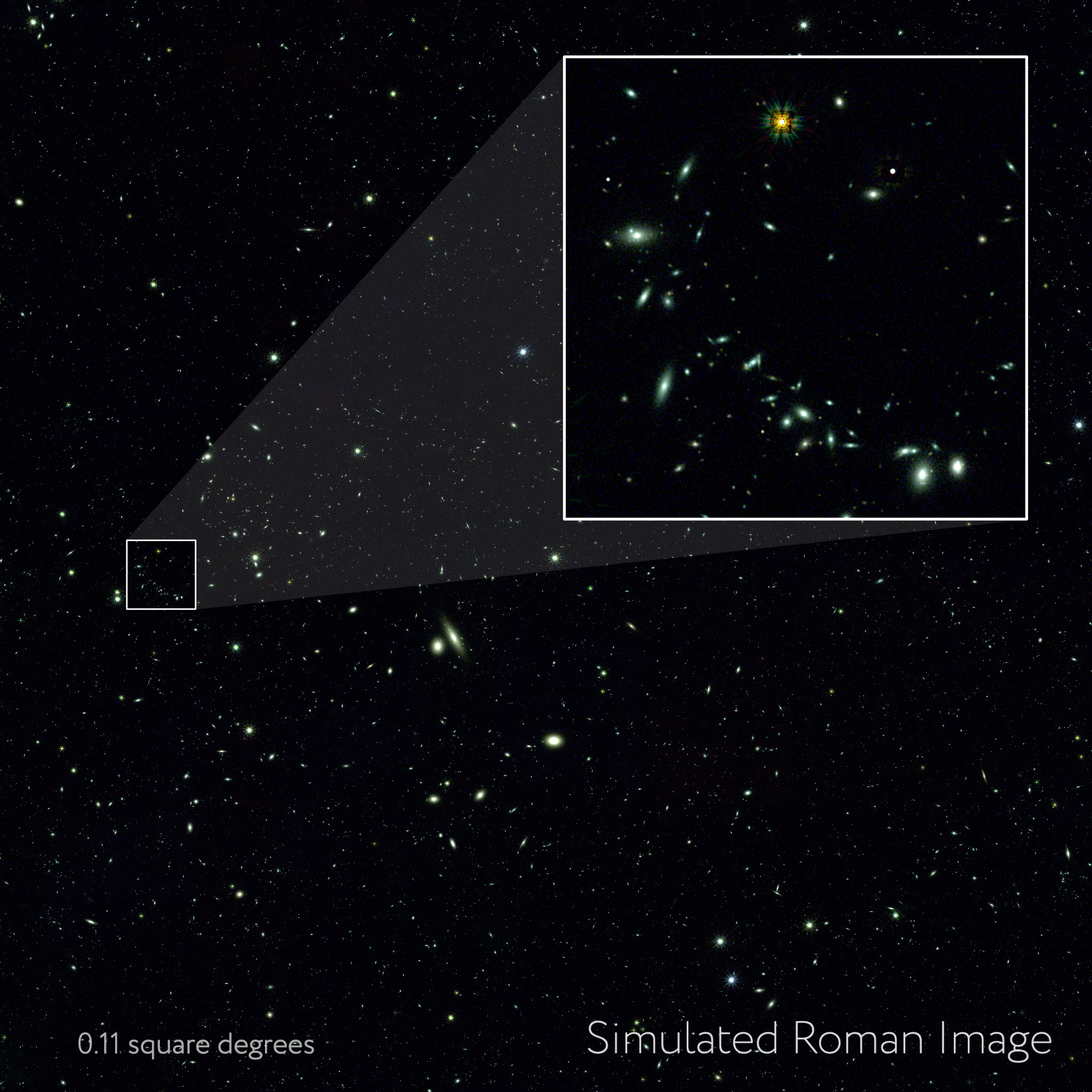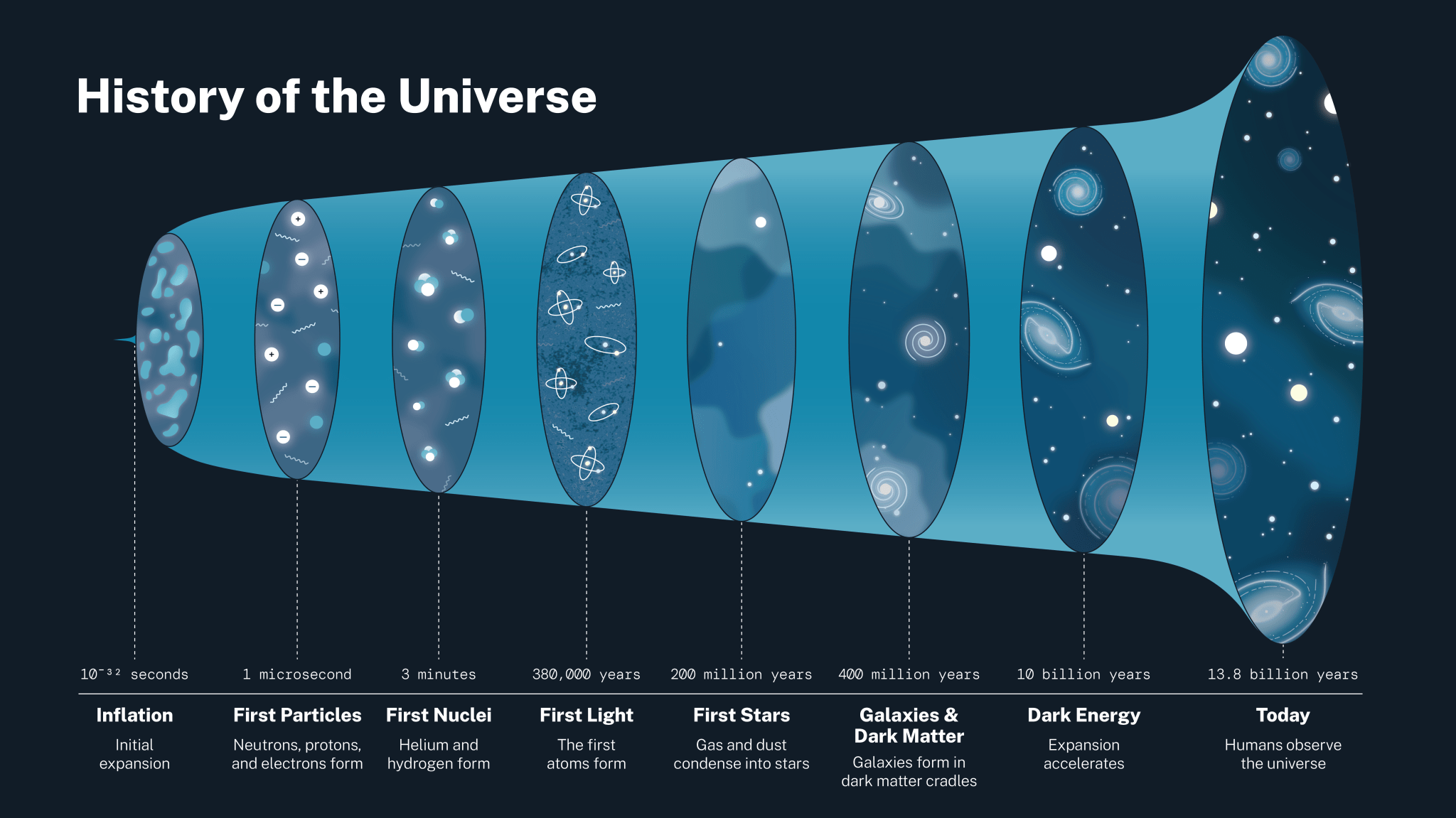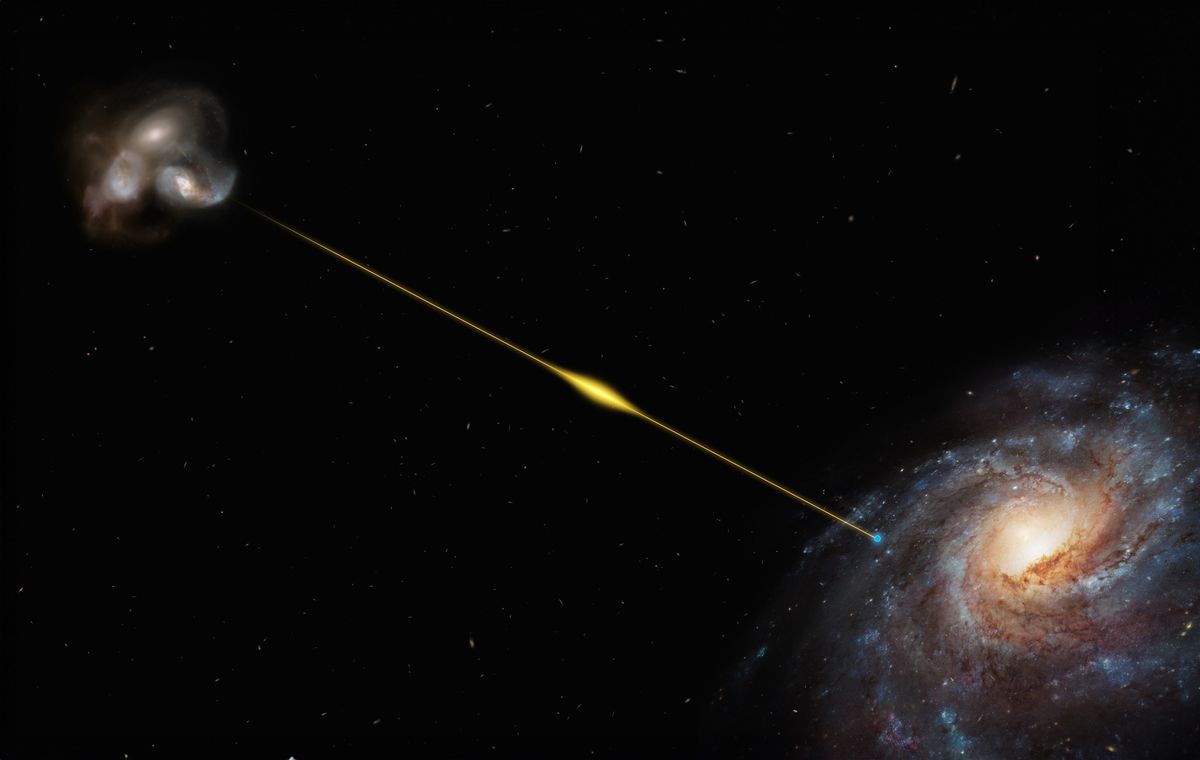Researchers are diving into a synthetic universe to help us better understand the real one. Using supercomputers at the U.S. DOE’s (Department of Energy’s) Argonne National Laboratory in Illinois, scientists have created nearly 4 million simulated images depicting the cosmos as NASA’s Nancy Grace Roman Space Telescope and the Vera C. Rubin Observatory, jointly funded by NSF (the National Science Foundation) and DOE, in Chile will see it. Michael Troxel, an associate professor of physics at Duke University in Durham, North Carolina, led the simulation campaign as part of a…
Read MoreTag: dark matter
What is Dark Energy? Inside our accelerating, expanding Universe
11 min read What is Dark Energy? Inside our accelerating, expanding Universe Some 13.8 billion years ago, the universe began with a rapid expansion we call the big bang. After this initial expansion, which lasted a fraction of a second, gravity started to slow the universe down. But the cosmos wouldn’t stay this way. Nine billion years after the universe began, its expansion started to speed up, driven by an unknown force that scientists have named dark energy. But what exactly is dark energy? The short answer is: We don’t…
Read MoreDark matter may be hiding in the Large Hadron Collider’s particle jets
A new search for dark matter has turned up empty handed — but, in a silver lining, the effort provided important limits that will help future experiments narrow down the hunt for this elusive substance. Most astronomers believe that dark matter accounts for 85 percent of all mass in the universe, and that its existence would explain the apparent extra gravity detectable around galaxies and within huge galaxy clusters. However, so far, no one has been able to identify what dark matter is made of. Until recently, the front-runner suspect…
Read MoreRecord-breaking radio burst could help us find the universe’s missing matter
An 8 billion-year-old rapid burst of radio waves, stemming from ancient colliding galaxies, could help astronomers solve the mystery of our universe’s missing matter. The record-breaking Fast Radio Burst (FRB), which is the oldest and most distant example of its kind ever spotted, demonstrates that scientists can use these emissions to effectively “weigh” the universe. FRBs are pulses of radio waves that often last for mere milliseconds, and are a puzzle in themselves because their origins remain a mystery. But the fact that this record-breaking example of one came from…
Read MoreThe mysteries of the dark universe could be solved by the Rubin Observatory
A pioneering new observatory that will build the most precise map of the universe ever could, in the process, solve two of science’s most pressing mysteries: The nature of dark energy and dark matter . Collectively, these components make up what’s known as the dark universe. The Vera C. Rubin observatory is currently under development on the El Peñón peak of Cerro Pachón mountain in Chile and is set to begin operations in 2025. When it does, Rubin will conduct the Legacy Survey of Space and Time (LSST), observing the entire…
Read MoreEuclid ‘dark universe’ telescope is back on track after finding its guiding stars
The European Space Agency’s (ESA) dark universe detective, the Euclid spacecraft, is on track after locating its guiding stars, which it lost as a result of cosmic misidentification. The satellite can now begin investigating dark matter and dark energy, which are some of the greatest mysteries in cosmology. Dark matter accounts for 85% of the matter in the universe but is effectively invisible, and dark energy causes the cosmos to expand at an ever-increasing rate. Euclid launched to investigate these cosmological mysteries, sometimes collectively known as the dark universe, on…
Read MoreDark Matter Remains Elusive – For Now
The first run of a new dark matter experiment turns up nothing — but that still tells us something. The post Dark Matter Remains Elusive – For Now appeared first on Sky & Telescope.
Read MoreA Cosmic Collision Could Have Made Two Dark Matter–Less Galaxies
Astronomers connect the dots between two strange doppelganger galaxies, uncovering what might be a string of galactic pearls created in a cosmic collision 8 billion years ago. The post A Cosmic Collision Could Have Made Two Dark Matter–Less Galaxies appeared first on Sky & Telescope.
Read MoreTwisters in the Cosmic Web
Astronomers have found that the largest structures in the universe spin, making twister-like strings of galaxies and dark matter in the cosmic web. The post Twisters in the Cosmic Web appeared first on Sky & Telescope.
Read MoreDark Energy Survey Catalogs 226 million Galaxies
The latest release from the Dark Energy Survey catalogs millions of galaxies, mapping the history of galaxy clustering across space and time. The post Dark Energy Survey Catalogs 226 million Galaxies appeared first on Sky & Telescope.
Read More

